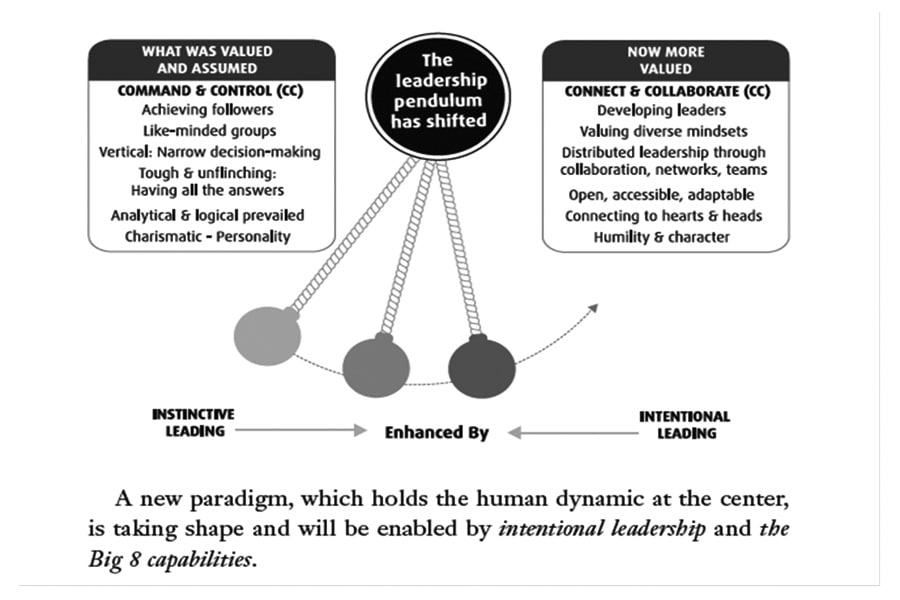
Intentional Leadership: The must-have capabilities for leading into the future
The pendulum has shifted: traditional leadership (instinctive, non-reflective) is being replaced by 'intentional leadership' powered by eight core capabilities
 Being intentional about renewing one’s approach is now the gold standard.
Image: Shutterstock
Being intentional about renewing one’s approach is now the gold standard.
Image: Shutterstock
Increased stakeholder expectations, a rapidly changing workforce and digital dominance are just a few of the elements making leadership as challenging today as it has ever been. Through a decade of study, observation and practice—plus hands-on engagement with a wide range of executives—I have explored the question of what leaders need to do differently to be successful in these extraordinary times.
One thing is certain: What got us here—instinctual, command-and-control, non-reflective leadership—is no longer effective. Being intentional about renewing one’s approach is now the gold standard. My work and teaching has enabled me to identify eight core capabilities that, together, define Intentional Leadership.
The discovery and exploration of how the ‘Big 8’ fit within leaders’ roles was debated and agreed-upon through 25 week-long sessions with over 900 senior executives at the Rotman School of Management and BMO Financial Group. In my new book, I describe why leading with intention is so important and explain the Big 8 in detail. In this article I will share insights about two of the capabilities: personal adaptability and strategic agility.
Capability 1: Personal Adaptability
Successful leaders are often asked, If you could name the skill that is most responsible for your success, what would it be? It’s a tough but fair question. Every leader should be able to prioritize the one, two or even three most-critical skills within their own context. During my decade of research for the book, virtually every leader I spoke to explicitly mentioned one particular skill: personal adaptability.Personal adaptability requires specific beliefs, habits and intentions: Are you able to embrace the new or changing dimensions of a problem? Can you tackle unfamiliar territory with an open mind? Can you listen, learn, add value and, even if not in agreement, remain open? None of this is easily done. But such are the demands on the leader.
[This article has been reprinted, with permission, from Rotman Management, the magazine of the University of Toronto's Rotman School of Management]





 A common question is whether a leader who has adapted well on a personal level and exercises an open mind from day to day is likely to also be strategically agile. The answer is yes: Like all of the Big 8 capabilities, these two are mutually enhancing as both call for the underpinning of having an open mind. My conversation with University of Toronto President Meric Gertler reveals how he and his team harnessed strategic agility during the COVID-19 pandemic, and how this was enabled by personal adaptability skills:
A common question is whether a leader who has adapted well on a personal level and exercises an open mind from day to day is likely to also be strategically agile. The answer is yes: Like all of the Big 8 capabilities, these two are mutually enhancing as both call for the underpinning of having an open mind. My conversation with University of Toronto President Meric Gertler reveals how he and his team harnessed strategic agility during the COVID-19 pandemic, and how this was enabled by personal adaptability skills:



